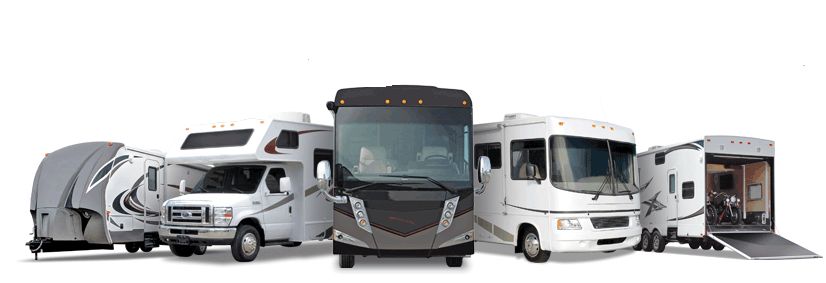Mobilehome, motorhome or Winnebago? Mobile homes are not RVs, but rather manufactured homes on wheels that must be towed to permanent locations (usually trailer parks) by large trucks and attached to external water, waste and electrical systems. Owning a mobilehome does not make you an RVer. Motorhomes (no space) are self-contained homes-on-wheels with onboard water and waste tanks, battery electrical power, engines and steering wheels. These vehicles can be driven. Winnebago is the name of an RV manufacturer whose name has become generic for any motorhome.
Class A, B and C motorhomes. A Class A is built on a heavy-duty chassis from the ground up, while a C is built on a “cutaway” van chassis. The nose, where the driver and passenger sit, looks like a van. A Class B looks like a standard van, usually with a roof extension and sometimes a rear extension, containing compact appliances and living spaces.
Dinghy or “toad” (“towed”). This is what you tow behind your motorhome (car, SUV, small truck) and use for sightseeing and errands so you don’t have to drive your home around. The terms are snyonomous.
Trailer, towable, toy-hauler, fifth-wheel (fiver), pop-up camper, recreation vehicle (RV)? They’re all recreation vehicles (though some dealers prefer to use the term RV only for driveables. The rest are all towables, though not the same. A trailer, toy-hauler, and pop-up are towed with a trailer hitch by a large car, SUV, or pick-up truck, while the fiver is towed by a special hitch (like the one used by big rig tractor-trailer trucks) installed in the bed of a pick-up.
Trailer park, RV Resort or campground. Trailer parks cater mostly to mobile homes, though they may have a few spaces for overnighters. Most RV resorts are privately owned and have lots of amenities like swimming pools, recreation rooms and WiFi. Think Good Sam Parks. Campgrounds are often publicly owned (e.g. forest service, county, or public utility) and can have full hookups, partial hookups or no hookups (primitive campground).
You can find Bob Difley’s RVing ebooks on Amazon Kindle.
